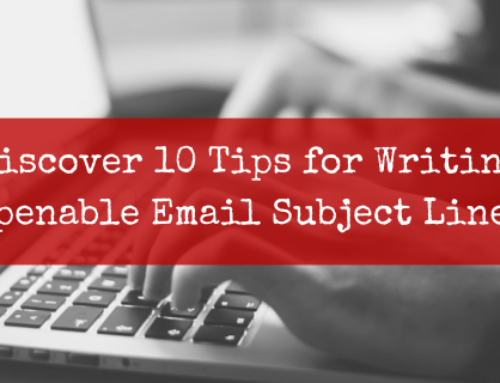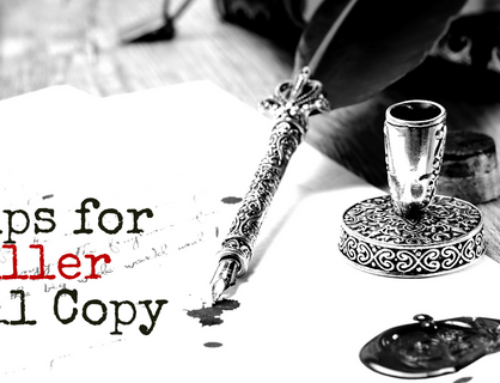In a world of social media and fast-paced video, are email campaigns even necessary anymore? You’d be surprised to know the answer. Email marketing still has the highest ROI of any digital tactic, returning an average of $36 for every $1 spent. You’d be wise to include email campaigns in your list of marketing tactics for your business.
Of course, that’s easier said than done. Email campaigns come in all shapes and sizes, and knowing where to start can be tricky. Let’s walk through the six stages of implementing email campaigns. Are you ready to see big results?
Choose Your Campaign
Before you can start writing some killer email copy, you have to figure out your campaign’s goal. Are you promoting a new product? Do you want people to read your latest blog post? Are you reminding a shopper that they still have items in their cart? Many campaigns will follow a consumer from the moment they sign up for your email list to the moment after they purchase a product. This is called the consumer journey. Just like its name, the consumer journey maps the flow from brand awareness to consideration to purchase to consumer loyalty.
Many marketing tactics only focus on one part of the consumer journey. For example, a TV ad either brings awareness to a brand or aids consideration. However, you can design emails for any point in the consumer journey. Personalization is powerful. That’s why email marketing has such a crazy ROI.
Your campaign doesn’t have to be so big that it tracks the entire consumer journey. Still, you’ll want to develop some concrete goals for your campaign. We suggest using SMART goals. SMART stands for specific, measurable, attainable, relevant, and time-sensitive. Your goals should be all of these things. This way, you’ll achieve realistic goals with the assurance that your campaign actually made a difference.
For example, you could say that you want 25 people to click on your new product landing page through your campaign in a week. This is a SMART goal in all aspects: it’s very specific, you can measure clicks, it’s a reasonable number of clicks, it’s relevant to a new product, and it sets a week-long time frame.
Now that you’ve got the foundation of your campaign, it’s time to figure out who will be opening those emails.
Build an Email List
Of course, you need a list of people that even want to read your emails. Whether you’re starting from scratch or already have a humble group of readers, there are a few ways to build your email list.
The easiest way to meet potential readers is to include pop-ups on your website. You can implement welcome gates to prime your users when they first visit your site, or you can add lightbox pop-ups to appear at different points on the site. Or, use exit-intent pop-ups, which will ask for emails as users are about to leave the site. Exit-intent pop-ups offer users a way to keep in touch.
If your business has a physical location, try a physical sign-up sheet. Regular customers will be more than happy to receive updates about your business. You may not get many sign-ups this way, but setting a clipboard out by the checkout is super easy.
Another quick way to snag a few more emails is to advertise your sign-up form on social media. Remember to mention all the bonus content users will get from your newsletters.
Finally, incentivize sign-ups through giveaway contests and discounts. All you have to do is require an email address to enter the giveaway or discount and watch your email list grow.
Whatever you do, do not buy email lists. The whole point of email marketing is to send content to consumers that want to read it. Sending constant emails to consumers that never signed up for your newsletter is a sure way to annoy potential customers and convince them never to buy from your business.
Segmentation and Personalization
Email segmentation is about making your emails relevant for most users. Your email list might include grandmothers and college students, and these two groups require very different messaging.
You can break down your email list in a variety of ways. You can also combine different segments to get the most out of personalization. Common segments include age, gender, geographic location, job function, education level, past purchases, buying frequency, interest level, and more. Look at the kinds of consumers on your email list and determine which segments you would benefit from targeting.
Another quick way to personalize your emails is to include custom greetings. Some email automation software has features that allow you to address users by name in their emails. That means that when someone opens your email, they will be greeted with “Dear John” rather than “Dear Customer.” This makes your emails feel much more human.
Plan, Plan, Plan
You know your goals and who you want to target with your email campaign. Now how do you get this thing started?
Remember the consumer journey. It’s essential to think about how your campaign will hold a customer’s hand, from just learning about your business to earning loyalty discounts for making so many purchases. How many emails will it take to achieve this? How many points in the journey should be accompanied by an email?
Many brands will launch a series of emails as soon as they get a new subscriber. Of course, you need an introductory email, but what comes next? Will you first show off some of your awesome content on your website? Will you dive straight into promoting your newest product? How personalized should each email be?
Think back to your SMART goals. Your email campaign should be leading consumers to complete those goals, so consider what emails will best guide them in the right direction.
It seems like you could send out emails for anything, huh? You could, but that’s not a good idea. Consumers hate spam. Stick to a schedule of about one email per 2-7 days. Keep a consistent amount of time between emails. People will be much happier to read your emails if it’s a regular treat and not a nuisance to their inbox.
Write Killer Copy
We already have a complete guide to writing killer email copy, but here are some of the highlights:
- Emphasize your call to action. Whether you want consumers to click on your latest blog post, download a coupon, or buy your newest product, ensure everything in your email leads them to that CTA.
- Write an eye-catching subject line. The subject line is the deciding factor in whether or not someone will open your email. Make it short, snappy, and to the point.
- Be friendly. Address your readers in second-person, using the words “you” and “your” to appear more personable.
- Keep it short. Readers have short attention spans, so keep your emails short but informative. Remember to use images and whitespace to make your email more readable!
- Make your emails look good. Use your brand colors and fonts so readers feel closer to your brand. Colors and font size can also guide readers to click on links and buttons in the email.
A/B Testing
Email campaigns never really end. You’ll always send emails to your subscribers, so make them as effective as possible.
That’s where A/B testing comes in. A/B testing is when you send out two versions of the same email, except one variable is different. It could be the subject line, type of content, font size, button colors, send time, or something else. The efficacy of each email can be measured through open rates, click rates, and generated revenue. Half of your email list will receive one version of the email, and the other half will receive the second version. May the best email win.
A/B testing allows you to optimize your email campaigns. Email software like Mailchimp has built-in testing features. If you want your emails to get the highest ROI possible, A/B testing is essential.
Now you know all about starting your very own email marketing campaign. Still confused? Understandable. Email marketing has a lot of variables, but we’ve been at this for a while. If you need a little help getting your campaign up and running, Little Red Writing is here to help. Contact us today to get started.





